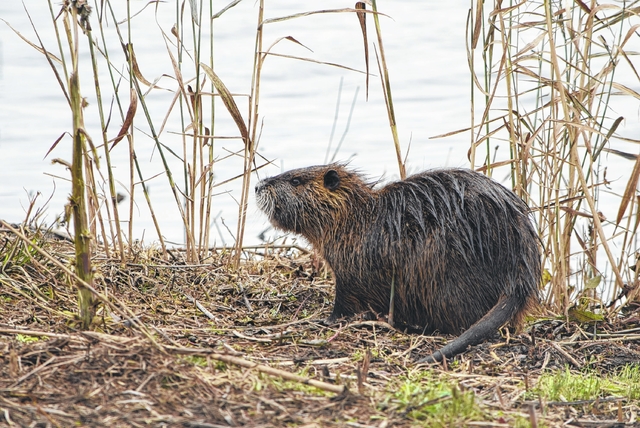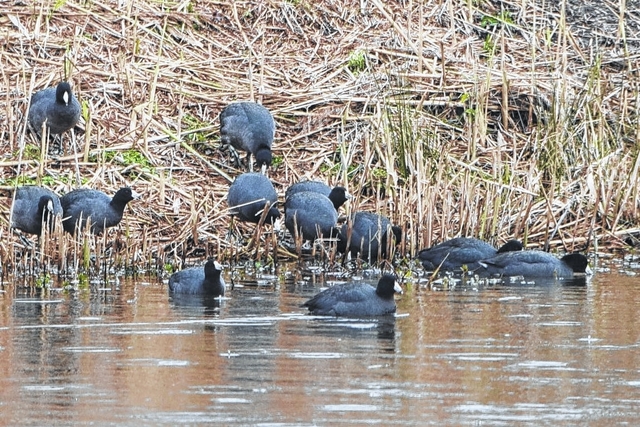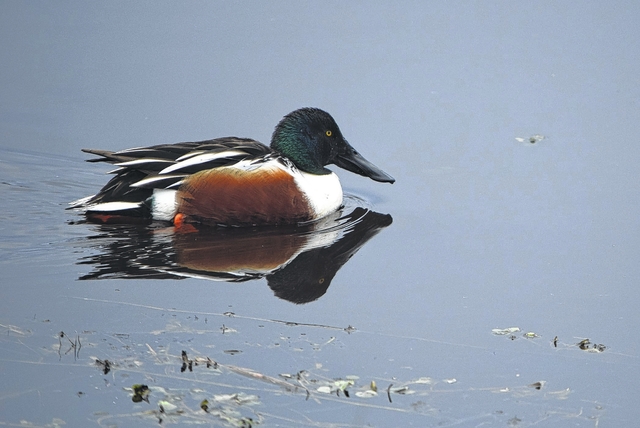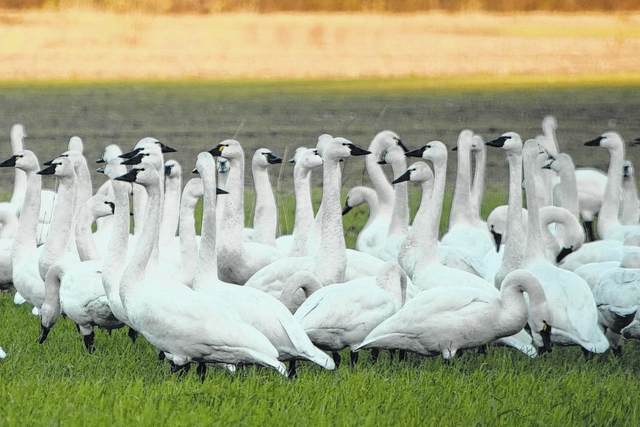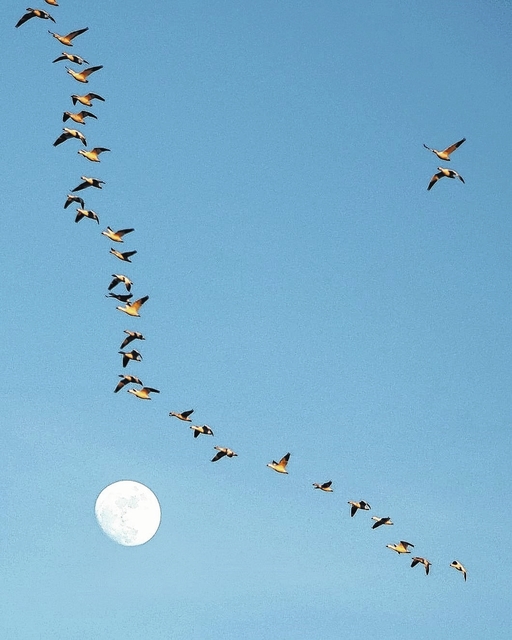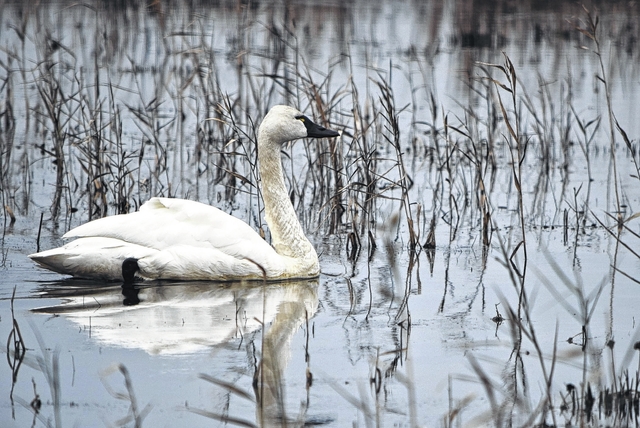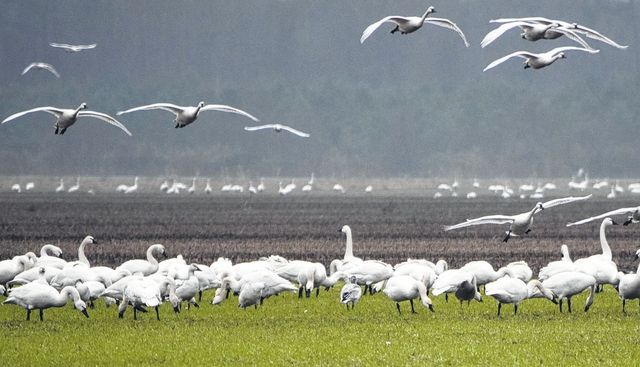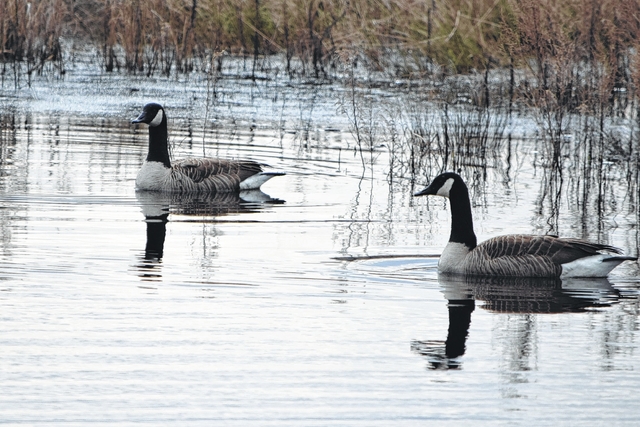Located in northeastern North Carolina, Pocosin Lakes National Wildlife Refuge and Mattamuskeet National Wildlife Refuge are extensive networks of open water, marsh, timber and cropland that provide habitat for a great number of birds, mammals, reptiles and amphibians, as well as a photographer’s paradise.
During the late fall and winter months, migratory birds, especially tundra swans, find their way to the the Pungo Unit of Pocosin Lakes where the agricultural fields provide winter nourishment. This crop management is the result of an agreement between the Wildlife Service and local farmers.
Lake Mattamuskeet, the largest natural lake in North Carolina, is a shallow 40,000 acre lake that also provides a haven for wildlife. There are many wetland areas that can be easily accessed by car to get very close to all types of migratory birds and resident wildlife.
Although the area is rather remote, it is certainly worth the trip to relax, look for unusual wildlife, and make an extensive number of photographs.
